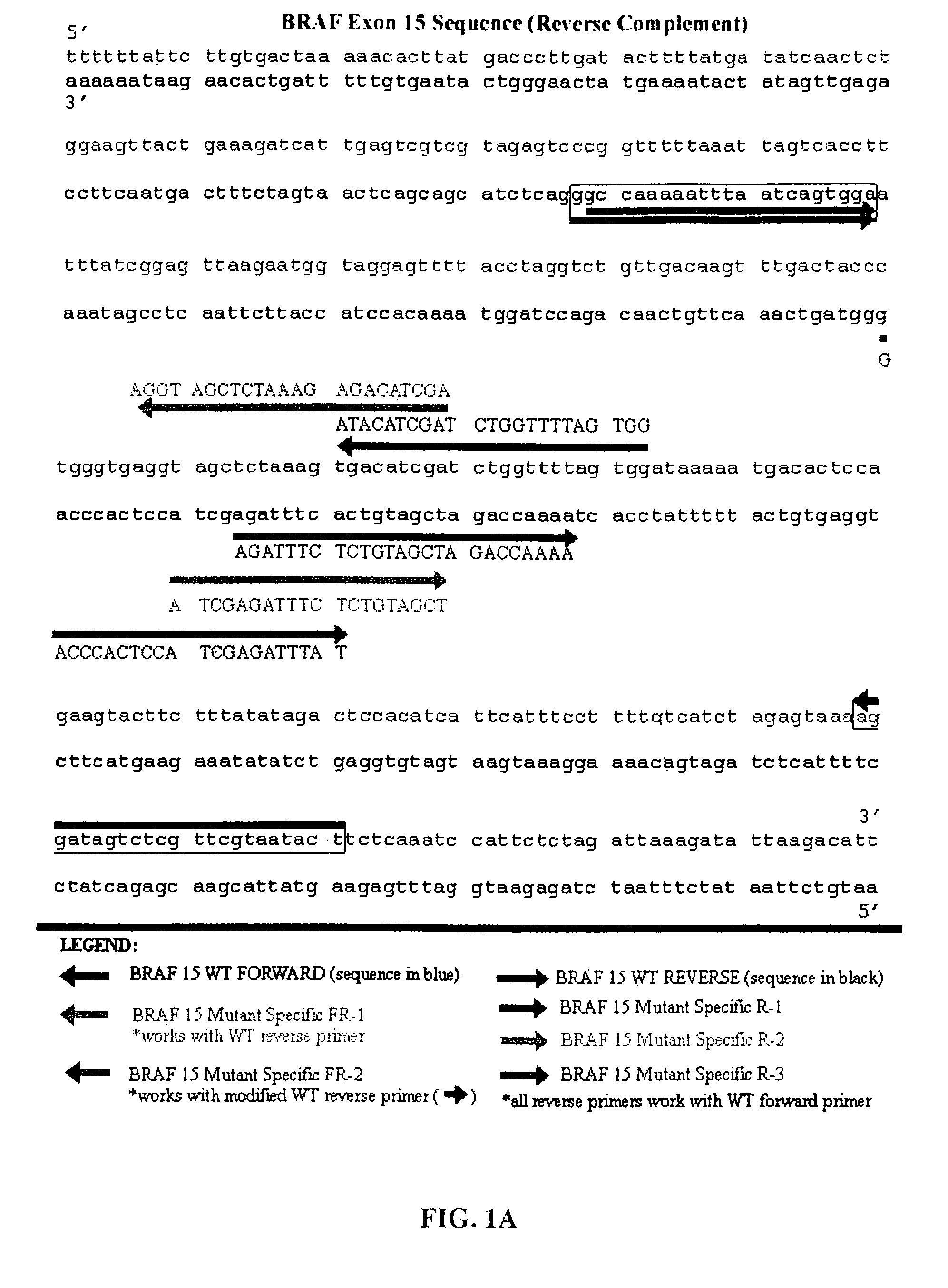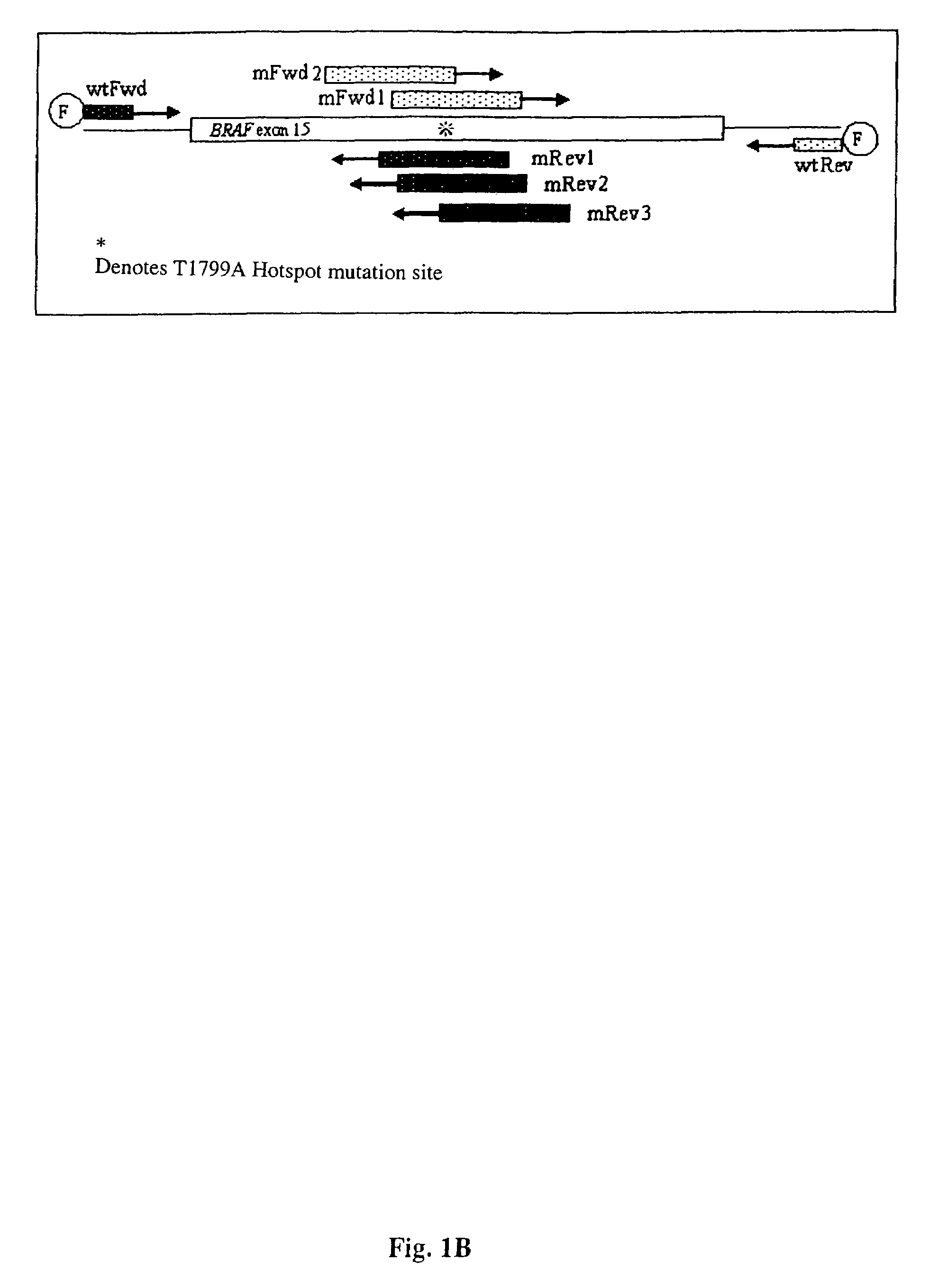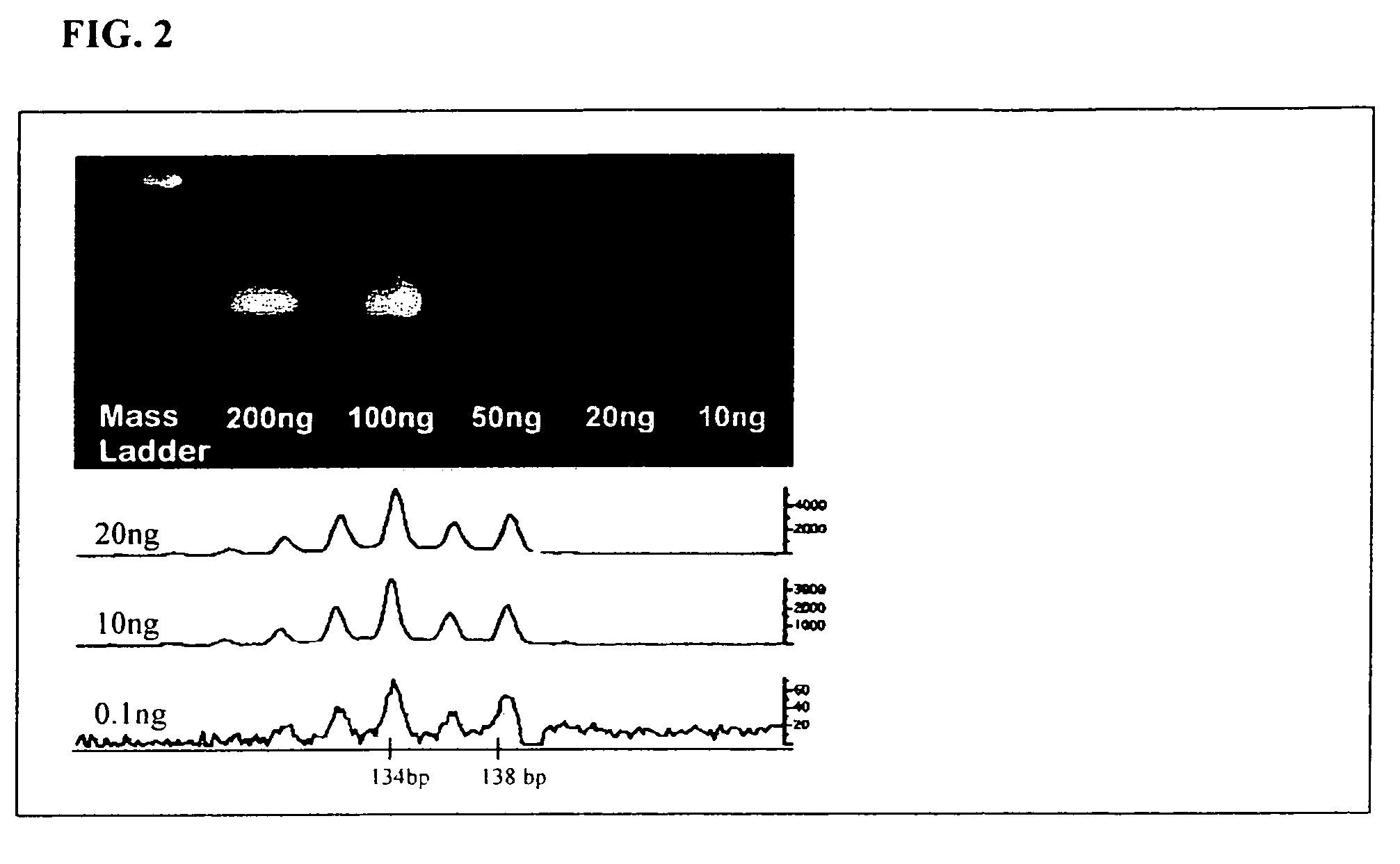Methods for detecting circulating mutant BRAF DNA
a technology of mutant braf and detection method, which is applied in the field of detection method of circulating mutant braf, can solve the problems of not moving past the preliminary stages of development into clinically useful assay, remains one of the most formidable challenges in the treatment of metastatic melanoma, and none of the studies have shown promise, so as to improve the sensitivity of the method
- Summary
- Abstract
- Description
- Claims
- Application Information
AI Technical Summary
Benefits of technology
Problems solved by technology
Method used
Image
Examples
example i
PCR-Based Assay for Detecting BRAF Mutant Nucleic Acid Sequences
[0122]Although anatomic imaging studies, such as chest X-ray, magnetic resonance imaging (MRI), CT, and positron emission transmission (PET) lack the resolution to detect the onset of metastatic processes, these approaches are used routinely to monitor patients for disease recurrence and to select patients at high risk for the development of metastases. The inadequacy of these imaging methods is underscored by the fact that tumor cell deposits at distant sites can take months to grow into metastasized disease detectable by these means. Elevation of serum LDH, an indirect marker of tumor burden, has been associated with progressive disease in several studies, but it has not been adopted at all melanoma centers as a useful monitoring test (reviewed in Hwu et al. 2003, supra). The TA-90 blood test has also shown promise, but multi-institutional validation studies have not yet been performed (reviewed in Hwu et al. 2003, su...
example ii
[0138]Analysis of Peripheral Blood Specimens. As demonstrated herein, the method of the present invention has been used successfully to detect the hotspot BRAF T1799A substitution in a peripheral blood sample of a melanoma patient. As shown in FIG. 3, an aspect of the present method directed to utilization of fluorescent, mutant-specific primers and PCR-mediated amplification of the BRAF mutant template to produce fluorescently labeled PCR products (BRAF mutant specific amplification products) is used for this analysis.
[0139]Peripheral Blood Specimens. In general, 8 to 12 ml of blood is collected in EDTA-containing (purple-top) tubes and placed immediately on ice. The blood is subjected to erythrocyte lysis using a hypotonic buffer (e.g., 10 mM KHCO3, 155 mM NH4Cl, 0.1 mM EDTA, pH=7.4). The leukocytes are recovered using centrifugation and washed with 1× phosphate-buffered saline. DNA may be extracted from collected cells using, for example, the QIAmp DNA system (QIAgen, Valencia, C...
example iii
[0148]The present inventors have also designed additional primers that have been further optimized to be of utility in the methods of the present invention that are directed to detecting BRAF mutations in circulating melanoma cells. These primers are designated mFR-2 and mR3, which are described herein in Table 1 and FIGS. 1A, 1B, and 4. The initial design of the mFR-2 and mR3 primers was based on primers described in Xu et al. and used in their analysis of BRAF mutations in papillary thyroid carcinoma (Xu et al. Cancer Res, 63: 4561-4567, 2003). The sequences of the mFR-2 and mR3 primers have, however, been altered to improve the specificity with which these primer sequences bind to mutant as opposed to wildtype BRAF sequences. Briefly, the primers comprise alterations in the 3′ end that prevent binding to the wild-type sequence, but allow binding to the mutant sequence.
Methods and Materials
[0149]Patients: The NYU-IMCG is actively accruing patients with Stage I-IV melanoma who are ...
PUM
| Property | Measurement | Unit |
|---|---|---|
| thickness | aaaaa | aaaaa |
| voltage | aaaaa | aaaaa |
| volume | aaaaa | aaaaa |
Abstract
Description
Claims
Application Information
 Login to View More
Login to View More - R&D
- Intellectual Property
- Life Sciences
- Materials
- Tech Scout
- Unparalleled Data Quality
- Higher Quality Content
- 60% Fewer Hallucinations
Browse by: Latest US Patents, China's latest patents, Technical Efficacy Thesaurus, Application Domain, Technology Topic, Popular Technical Reports.
© 2025 PatSnap. All rights reserved.Legal|Privacy policy|Modern Slavery Act Transparency Statement|Sitemap|About US| Contact US: help@patsnap.com



